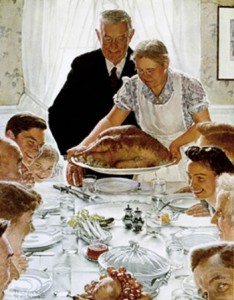
Tag Archives: Fear
Waking up at three in the morning and not being able to fall back asleep is rough. Going to bed at 11 pm, but not falling asleep till 1:30 am is equally wicked. Let’s look first at the biochemistry of sleeplessness, and then explore two techniques useful in putting yourself into sleep. 
By and large, it’s a chemical reaction that keeps us awake–one instigated by our thoughts and feelings. The trick then, is creating a different chemical reaction, requiring different thoughts and feelings.
Here’s what I mean. More often than not, when we can’t fall asleep, our minds are chewing on some thought. But by the nature of that thought, we begin to feel more and more anxious, nervous or scared. It’s those uncomfortable feelings that begin the biochemical process. Essentially, those scary thoughts, that then make us anxious, produce a fight or flight reaction in the body. Literally, when in a fight or flight reaction, the body pumps hormones through us that ready us for action. You know those chemicals are coursing through you when you start twisting and turning. The chemicals are trying to activate you so you can protect yourself. That’s because the scary thoughts and feelings are telling the body it needs to protect itself. Great when chased by a dog. Not great when wanting sleep.
When trying to sleep, we want chemicals or hormones released by our bodies that encourage relaxation. But if our minds are chomping on scary thoughts the body is incapable of those relaxation hormones.
This is where the techniques come into play. Both techniques below offer replacement thoughts that produce more comforting feelings, that then encourage the body to release more relaxing chemicals. The techniques are called The Golden View and The Compassionate Heart.
Let’s start with The Golden View exercise:
Step 1. Recognize that your mind is racing
Step 2. Imagine an ideal or Golden solution to the fearful situation your mind is stuck on
Step 3. As your mind pulls to return you to the fearful thinking and feeling, gently continue to fill in all the details of your Golden View of the future as your ideal solution unfolds.
Now a look at The Compassionate Heart exercise:
Step 1. Recognize that your mind is racing or uncomfortable
Step 2. Call to mind someone you know who’s struggling or in some kind of pain
Step 3. As you inhale, compassionately see that person, and as you exhale, send them love and trust
Are the dreams we have when we’re sleeping just a bunch of nonsense, or is there some method to their madness? Well, it was 33 years ago when I did my master’s thesis on dreaming and experience tells me there’s a lot to be learned through our dream life.
My first real focus on dreaming came in the late 70’s as a Novitiate at Pecos Benedictine Monastery just north of Santa Fe, New Mexico. What a journey in the mountains that was, literally and figuratively. As members of that religious community, each of us had a “spiritual director,” who counseled us. And part of that counsel was an exploration of our dream life.
This particular monastery held the work of psychiatrist Carl Jung, MD, in high regard. Jung was a student of Freud. Jung eventually had his own student, Fritz Perls, MD. I’ll come back to that.
Two distinct memories related to dream work during my life in the monastery come to mind. One was the story of a fellow novitiate. She (yes, this was the only Benedictine monastery in the world at that time that had both men and women living together) shared with all of us a powerful dream experience she had.
Becky described a series of horrible nightmares about a terrifying monster climbing down from deep in the mountains and into her room to attack her. She was absolutely petrified by the thought of this fiendish creature. So together, she and her director began to unravel this recurrent dream.
As part of that unraveling, Becky was taken through an exercise. At the start of the weeks-long process, Becky’s director asked her to imagine somehow communicating with the monster that visited her at night. Becky immediately reacted with tremendous apprehension. It was completely beyond her capability at the beginning of this dream work to imagine the looks of this creature that scared her so, much less speak with it.
[By the way, this form of dream work entailing dialogue with aspects of a dream is fairly common, especially under the Gestalt approach which was formalized by Dr. Perls.]
Becky eventually, through the gentle guidance of her director, found a way to start some kind of communication with the beast of her dreams. Becky called on her active imagination. Surrounding the monastery was a tall, wrought iron fence, with large gates at the main entrance. Becky began her dialogue with the mountain monster by imagining that she could hide behind the gates of the monastery and yell up to it in the mountains. In response, the monster would growl back. Of course, everything in Becky shuttered in these early attempts.
As weeks passed, Becky began yelling questions at the monster in the mountains, and the monster began offering primitive replies. Over time, Becky began to feel some shift, and her communications with the beast felt safer. Later, through role playing, Becky and the monster were visible to each other. And in the end, Becky was standing on one side of the monastery gates and the monster just on the other. That’s a lot of trust. But the payoff of that trust was that Becky discovered something very healing through the dream.
We’ ll continue Becky’s journey and mine next week, along with more information about dream work styles.
Science is pretty clear on this one: love brings healing and wholeness. Fear, anger and doubt bring compromised immune function and unhappiness. So for your sake, why not add more love to your life in the New Year? 
We know from lots of studies that living in a state of peace and love and happiness strengthens our body’s ability to fight disease. The research is so consistent and prolific that most accept it now as common knowledge.
But we forget. We get politically fired up, or fired up on a basketball court, or fired up at a co-worker or neighbor. This is where the research can be a bit tricky to understand.
Research seems to suggest that getting “fired up” or angry isn’t a bad thing. However, if we blow a gasket on a daily basis, or if we hold our anger in and act like everything’s great all the time, then our bodies can pay the price. So it’s not anger itself that’s bad for us. It’s explosive or suppressed anger that will cause physical problems.
Same for sadness and fear. We all have regular occasion to be sad or scared or doubtful. These emotions are part of life. Problems arise, though, when we completely avoid these more difficult emotions, or when we get stuck feeling one for long periods.
Sure, there are times in all our lives when we seem to get angry a lot, or we just can’t shake the blues. But the healthier we get, the less fear, anger, doubt and sadness linger.
All emotions deserve a place at the table. Just make sure it’s you sitting at the head.
With practice, each of us is capable of naming individual emotions as they rise up. And mastery comes when we see each emotion simply as a wave that has splashed up from the ocean of our minds. We remain in peace as each feeling crashes the surface of our thoughts, knowing that soon it will return to the deep and quiet ocean it came from.
Our job is to watch these emotion waves rather than become them. When we become each individual wave or emotion, we can get tossed about. However, when we simply watch each wave, we stay calm like the ocean deep; like the deep waters of the still mind.
When we practice this emotional witnessing, we return more quickly to the peace and love always available to us and in us.
So to help add a little love to your New Year, consider trying one or two of these:
- Put your hand on your heart, and feel your own heart beat.
- Feel your lover’s heart beat.
- Make a donation.
- Get a massage.
- Give one.
- Send a card to someone who could really use it.
- Build something; bake something.
- Commit to doing something special next week that you really enjoy.
- Laugh hard.
- Sing.
- Let someone love you in a very specific way.
- Say, “I love you,” with conviction.
- Send loving thoughts to someone you don’t understand.
Here’s to more love, peace and joy in 2016.
Thanks to Oprah, gratitude journals were all the rage a while back. And while most wouldn’t peg me as a hipster, thanks-giving has real appeal. That’s because the simple act of gratitude can upshift our immune system. And the on going practice of giving thanks can actually change us at the level of our DNA–maybe more.
Cell biologist, Dr. Bruce Lipton, has a great DVD presentation called, “The Biology of Perception.” In it, he outlines some fascinating fundamentals about how we function at the cellular level, and how that translates to the way we are in the world at large.
In his presentation, Dr. Lipton wonderfully explains the notion that our bodies are always operating in one of two basic modes: growth or protection. Always [and only] one mode or the other. Never both. This paradigm overlays perfectly with the work of Gary Zukav who says we constantly move between two inner states: love or fear. Dr. Lipton describes love to be the number one ingredient for supporting growth in humans. Gratitude is love: love for someone, love for something, love for someplace, love for some belief. All gratitude.
This is where it gets interesting. Our body’s general mode of living or being in the world begins at the level of perception. For example, I love racing motorcycles. Therefore, no matter how many others perceive racing as dangerous, when I race my systems kick into the growth mode since I perceive racing as awesome. When we are in growth mode, our immune systems are bolstered. That’s because when we are in a state of love or gratitude, healthy blood flow is maintained to the gut where the immune system is born. That’s unlike the mode of protection or fear, by which blood is forced out of the gut, to the arms and legs. For me, racing motorcycles establishes a state of love, born of gratitude, which produces growth or health in my body. That’s assuming, of course, I “keep the rubber side down.”
But that’s the thing. What do you think happens to the immune system of someone who cares about me, but perceives racing as dangerous, when she watches me on the track? That person’s body will go into protect mode. In protect mode, the body squeezes blood out of the gut and core organs, and sends that blood to the limbs, readying for fight or flight. Because this fear state robs the belly of blood, the immune system living in the gut of that person watching me race takes a hit. At that point, that spectator is far from a mode of gratitude. And this interrupts growth. All of this gets reflected in the hormonal and nervous systems. And all this has the potential, according to Dr. Lipton and others, to literally redo DNA. (Remember The INNERnet?)
We have the same external event, a motorcycle race, producing a growth response in one person and a protection response in the other. What creates the difference in responses? Not the race. It’s each person’s perception of the race. Think of the implications of perception, beyond a race. How often do we protect simply because of a perception? And what might happen if we had a growth response instead?
Here’s the last and maybe most interesting of Dr. Lipton’s points. This basic love/growth versus fear/protection process begins at the cellular level. He tells us that if you lay a single human cell in a petri dish, and put some form of nutrient near that cell, the cell moves toward the nutrient and grows. But if you put that same human cell in a petri dish and place a toxin near it, the cell moves away to protect itself.
Now multiply that basic process by trillions, the number of cells in each human being. Then multiply that by billions, the number of us on the planet. Dang, that’s a lot of cells and humans either growing or protecting. Nonstop, all of us are either growing or protecting!
So, gratitude and love expand us. Fear and protection contract us. What would happen if all the cells of all the people in the world expanded in gratitude at the same instant? It all starts with perception. Do we look out at the world and see good, or something else?
With that, the prescription for the health of our species comes into focus. When we all find reason for gratitude, the human race grows in love.
Happy thanks-giving.
When we’re madly in love, it’s all good. Or so it seems. When we’re madly in fear, what felt like love now just feels like madness. Here are some thoughts about distinguishing the madly in love from the madly in fear.
We all have two needs: the need to be connected and the need to be separate. Behind each of these two needs is a fear. Behind the need to be connected is the fear of being over-connected or engulfed. Behind the need to be separate is the fear of being over-separated or abandoned.
When you are healthy, your relationships reflect that health. And healthy means you balance your need to connect and your need to be separate. So does your lover. Your choice of lovers mirrors all that’s wonderful about you and all that’s wounded. In keeping with this mirroring, healthy lovers mutually recognize and honor both needs for connection and for separateness. That same mirror also reflects any fears.
“Madly in love” usually becomes, “in love,” which may for some evolve into simple, healthy “love.” Healthy love has its ups and downs, but doesn’t reach the extreme swings in thoughts, feelings and actions that we’ll talk about later. In healthy love, there are real differences. And sometimes that means intense conversation. But respect for the other remains in tact and trust remains unbroken.
Healthy love feels comfortable even if the object of your affection is out having a good time without you. Healthy lovers may actually enjoy time being separate from the other. And there’s no preoccupation wondering what your lover thinks if you take time for yourself. That’s because you trust that person to take care of him or her self. And that person trusts you and what you do with your time.
So those are thoughts about healthy love and the need for separateness. The other half of the equation is how you respond to your need for connection. In healthy love, you feel safe moving toward the object of your affection, because you know, first of all, that your lover is happy to receive your connection. Secondly, you know that if one of you needs space when the other needs contact, you (as an act of love) will either accept the other’s need for connection, or will honestly express the need to be more separate. All of this is done in a spirit of respect. It’s actually pretty straight forward. No heaviness. No deep talks. And respect is a product of trust, which emerges as a central quality in healthy love. However, in unhealthy love, trust is lost in fear.
Unhealthy lovers feel just the opposite when separate from their love interest: “What’s my love doing?”; “Who’s my love with?”; “Is my love thinking about me?”; “Does my love have as much fun with me as he/she does with that other person?” These are unhealthy thoughts related to madly in fear of abandonment and these are the hallmarks: suspicion, neediness, things are never quite enough, trying too hard, over-giving, and holding on with clinched fists.
The other primitive anxiety spoken about above is madly in fear of engulfment: “I can’t breathe in this relationship anymore.”; “There’s always an issue.”; “I’m not attracted to you.”; “Grow up.” Rage, disrespect, disengagement, giving up, pushing away: these are attempts to create distance from the pursuing partner, and hallmarks of the madly in fear of engulfment.
Soon the madly in fear dance begins: one person backs away, the other pursues. The one pursuing feels hurt and the one pursued feels cornered. The passion and play and pleasure and flow of the original relationship have turned into one sand trap after another. Everything seems bogged down and weighty and flat-out scary. Of course, it takes two to tango, and eventually the one pursuing stops, leaving the pursued feeling alone, and the step flips. Dang.
If you think fondly of your love, and even long for that person, but feel comfortable by yourself and, yes, comfortable in the presence of your lover, you’re probably healthy in love. If you feel uncomfortable and anxious away from your lover; uncomfortable, judgmental or highly self-conscious around your lover, you’re probably crazy in fear.
The way out: pay attention to your own fear, not your lover’s stuff. Own that your lover is not causing your fear. It’s yours to shift. If you both take responsibility for your own fear, you might just create love.
New York Times bestseller, Gary Zukav, introduced me to the love/fear paradigm years ago through his book, The Seat Of The Soul. It’s become clear to me, after 35 years counseling folks in all kinds of pain, that , more often than not, we are walking in either a state of love or a state of fear. Thank goodness, shift happens.
Trust, peace, tenderness, openness, gratitude, kindness, and healthy power: these are all emotions born of an inner experience of love.
Doubt, anxiety, anger, confusion, discontent, bitterness, rigidity, impatience and unhealthy power: these are all emotions born of an inner experience of fear.
Love and fear, like all emotions, are just that–emotions. Period. One emotion is no better than the others. All are just sign posts on the journey of our lives.
But here’s the important difference between those emotions in the love category and those emotions in the fear category. Those emotions born of an Innernet of love make us feel good. Those emotions born of an Innernet of fear make us feel bad.
By the way, I refer to these two states as Innernets because these core emotions have a measurable effect on a core aspect of our brains, the neuronets.
So while no emotion is bad, all emotions have a good or bad impact on how we feel, which affects our hormones, neuropeptides and neuronets. And this has a good or bad impact on our bodies.
Fundamentally, what helps us and our bodies most is to experience whatever emotion shows up and then gradually shift ourselves to an Innernet state that feels good or better.
This shift is not about thinking. To access an Innernet state that feels better, you have to deal with feeling.
So here’s a quick, three-step technique to make Shift Happen:
- Ask yourself regularly, “What’s my core feeling: love or fear?”
- Ask yourself, “Does this core feeling serve me right now?” Sometimes we are given guidance by our anger, sadness or fear. As a result, sometimes it’s important that we experience those emotions.
- If your core emotion right now does not serve you, gently shift what you experience at a core level, in your gut, to a feeling more like love.
In making Shift Happen for yourself, it’s important that you gauge the shift with your gut and not your mind. Your body can help here. Your body has ways of telling you that you are moving into an Innernet state of love: breathing slows, face relaxes, stomach quiets, and body movements become more fluid, just to name a few.
If you’re having trouble creating a shift in yourself to loving kindness, it’s OK. Be gentle with yourself. Don’t force or wrestle yourself into a state that feels better. Simply set an intention regularly to feel more of this inner goodness, and then invite that better feeling when you can. Again, the real shift happens at the emotional and physical level. To truly make a shift in this way requires fundamental shifts in body chemistry and form. This can take time. Please be patient with yourself.
If it helps, try going for the feeling you have when you’re in the arms of someone you love. Again, the feeling matters more than the thought. Or go for the feeling you have when holding a baby, or a puppy. Thoughts can take you there, but the destination we’re after is the feeling. Let your whole self and body bask in this feeling. Then Shift Happens.
Endorsed by two New York Times bestselling authors.”



